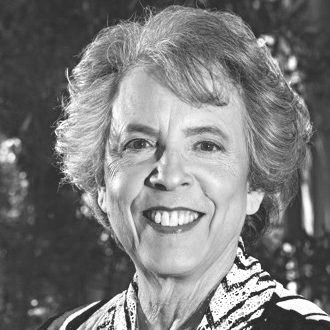For the past five weeks, the entire Jewish community has been counting … counting the days between Passover and Shavuot, the anniversary of the day we received Torah. This linking of Passover and receiving Torah reminds us that our exodus from Egypt wasn’t only about our own freedom, but also the freedom to work to create a world where everyone counts.
There have been so many examples in the news recently reminding us to pay attention to who counts for us, for whom are we willing to take a stand: the Nigerian girls kidnapped by Boko Haram, the people of Brunei who will be brutalized by the imposition of the sultan’s interpretation of Sharia law, the workers at the Beverly Hills Hotel and the Hotel Bel-Air, who will need to be protected even as many of us choose not to frequent those hotels owned by the sultanate. The enumeration of who ought to count goes on and on.
This week’s Torah portion challenges us to think about who counts and who is counting, not just in the larger world but right here in our own Jewish community. “Take a census of the whole Israelite community by the clans of its ancestral houses, listing the names, every male, head by head. … You and Aaron shall record them by their groups, from the age of 20 years up, all those in Israel who are able to bear arms. Associated with you shall be a representative of each tribe, each one the head of his ancestral house.” (Numbers 1:2-4)
Rashi, the 11th-century commentator, explains why they were counted: “Because they were dear to God, God counts them all the time.” But who is actually counted? Everyone? Apparently not — only men who can be soldiers. “The Torah: A Women’s Commentary” asks, “How are we to understand the litany of names that fill this parasha? … The dominant motivation is to organize Israel into battalions in order to begin the march toward Canaan … But the census also represents a point reached in every community when the group takes stock of who stands in its ranks.”
Who stands in the ranks of the Jewish community now? Who is counted? An obvious answer is young Jews in their 20s and 30s, a population we need to invest in to ensure the Jewish future. All kinds of Jewish organizations, including synagogues, federations and other nonprofits, are exploring new ways to engage younger, unaffiliated Jewish adults.
But in focusing only on the younger members of the community, we risk losing the connection with our “ancestral house.” Older people, particularly baby boomers, are also part of the Jewish future. They are the ones who connect to Judaism. They can be a model to their grandchildren, Jewish and non-Jewish. They can share their talent and energy with the next generation and ensure the Jewish future.
Prominent social scientist Steven Cohen has observed: “Boomers (people born between 1946 and 1964) are the first generation in human history … to reasonably anticipate living well and wholesomely into their 80s and 90s if not beyond. … Jews (as others) are not only living longer, they are living in an age of meaning-seeking, with the interest and wherewithal to make living a life of meaning an ultimate and reasonably obtainable objective for any point in their lives. As such, this aging yet largely healthy generation of American Jews poses a challenge and an opportunity to a society and community that is as yet unprepared for the totally new policy and planning opportunities that loom in the near future.”
What would it look like for the Jewish community to really count these boomers entering into the next stage of their lives? It might look like the Milken Institute’s Successful Aging Innovation Summit that took place a few weeks ago in Beverly Hills, which included leaders in fields ranging from public health, public policy, communications, business as well as nonprofits and faith communities brought together to reframe “the notion and narrative of retirement,” according to Paul Irving, president of the Milken Institute. As he explained, “Powered by beneficial purpose, a new model of engaged aging is emerging … that capitalizes on the value of accumulated knowledge, wisdom and experience.”
The Jewish community can be enriched by counting this accumulated knowledge, wisdom and experience. A first step is a community-wide conference this fall at Temple Emanuel of Beverly Hills featuring Marc Freedman, author of “The Big Shift” and creator of encore.com. Stay tuned for more information.
We all need to count.























 More news and opinions than at a Shabbat dinner, right in your inbox.
More news and opinions than at a Shabbat dinner, right in your inbox.